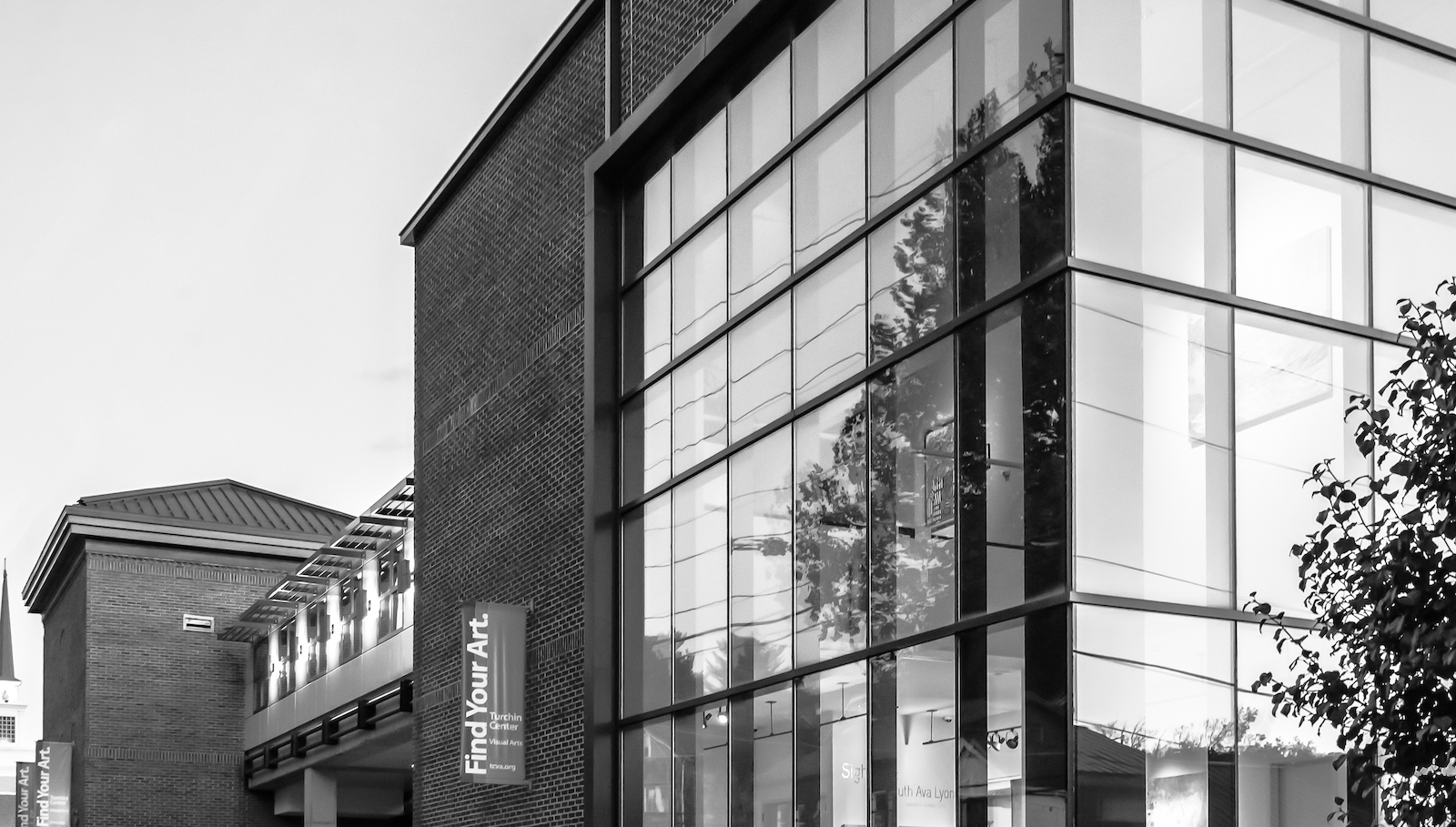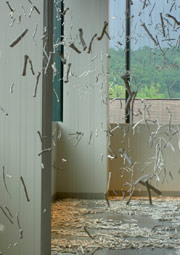The Turchin Center invited artist Thomas Koole to reinvent its non-traditional Carroll Gallery. Many contemporary artists work, at least in part, in the installation or site-specific format. This differs from a more traditional exhibition where particular works are selected and the curators design the installation to best support the presentation of the work. Koole says of the format, “The exploitation of the sense of ‘real’ is my interest in installations—the context of place, the audience’s immersion within environment, re-enforces the object’s experienced ‘realness’. I realize that this dimensional ‘reality’ is also illusionary or metaphorical, at times theatrical, but the experience is more ‘lived’ as opposed to the spatial disassociation and subjectivity implied by viewing distance of “the picture”. The Turchin Center recognizes the importance of providing this type of opportunity for the contemporary artist. Often work that challenges our personal conceptions about art lay the foundation for new directions within the creation of art and our personal understanding of its nature. We must remember that these artists aren’t seeking innovation for its own sake, but rather as a tool for contemporary interpretation of the world around them.


A Site Specific Installation by Thomas Koole. Ceramic. Photo credit: Paul Grant.
Artist statement
“Art is a language, adept at mingling pragmatism and frivolity. This poetic and oblique analogy is significant; it explicates the distinction between communication that limits or defines (traditional language) and a discourse that opens or expands the perceptive possibilities (art). While I am motivated by the singular and the concrete—the nature of materials and the trials of human experience, I sift the latent to discover-uncover the precursor(s), the encompassing continuum and the future potential, rather than merely address the specific reality of object or the moment of event(s). Art is most often about questions, unanswered yet still imperative, not solutions. To be of consequence, art communicates across time and culture and speaks with a global perspective.
“Consequently, much of my work is political, but focused on the larger humanitarian issues that transcend finite incidents: the need for moral and ethical responsibility and a rejection of the philosophy of compartmentalization implicit in contemporary culture and politics. The erroneous correlation of cultural and technological sophistication seems evident but disregarded. History has everything to say and no one to listen; progress always has ignorance in tow.
“I employ the evocative relationship between the hand and the material as a kind of evidence of commitment, a statement of search and dialogue. It is important that each step of the artistic process is personally executed to maintain contact with the nuance between object and meaning. I intentionally leave the “trail of bread crumbs”, the sequential evolution revealed, as the process is inseparable from the result. The object is the sign of its own evolution—its development makes the statement of its intent, not merely the fact accomplished. This is important, as verbal attachments of meaning are restrictive, however helpful, and are ultimately, exiguous. The art object should always be more innovatively referential and autonomous than my initial conceptual vision. The artistic act is intuitively governed, impulse leads reason; the resolution of an image can only be recognized, not foreseen.
“I am partial to three dimensional art objects that have a “reality” that challenges our perceptions in a sensory manner—harder to dismiss than the illusion that is implicit in two dimensions. The exploitation of the sense of “real” is my interest in installations—the context of place, the audience’s immersion within environment, re-enforces the object’s experienced “realness”. I realize that this dimensional “reality” is also illusionary or metaphorical, at times theatrical, but the experience is more “lived” as opposed to the spatial disassociation and subjectivity implied by viewing distance of “the picture”. Art is life, in addition to its connotative-associative role.
“I reject the restrictive conventions of style and media centricity in my practice—I exploit ideas via a diverse range of imagery. Culture’s contextual expectations of an object are an important part of how I structure my use of media to evoke associations. My intent is to manipulate the viewer’s preconceptions. For example: I use primitive form in opposition to technological sophistication and simultaneously turn the idea of physical function against intellectual aestheticization. My analogy for progress is “we have evolved to the point of putting really precise corners in our caves.” Each medium has a history and a family of relations to objects and ideas that are significant within and beyond the medium’s particulars. Painting cannot die because of the potency of its history—the reflection upon it creates new meaning with each new example. The historical function of the two dimensional image, to record humanity’s aspirations to understand the eternal and ethereal, contextualizes viewer-ship. Esthetic rarefaction, beauty and historical cultural significance characterize painting and connoisseurship. Sculpture, made from wood, stone, metal, clay and the mediums of earth, is, by the historical function of these media’s utilitarian service, less pretentious, more beguiling and simultaneously perplexing—the expectation of function (“reality”) remains. My practice is conceptually focused, physically enacted, and ethically, humanitarianly motivated.”
– Thomas Koole
